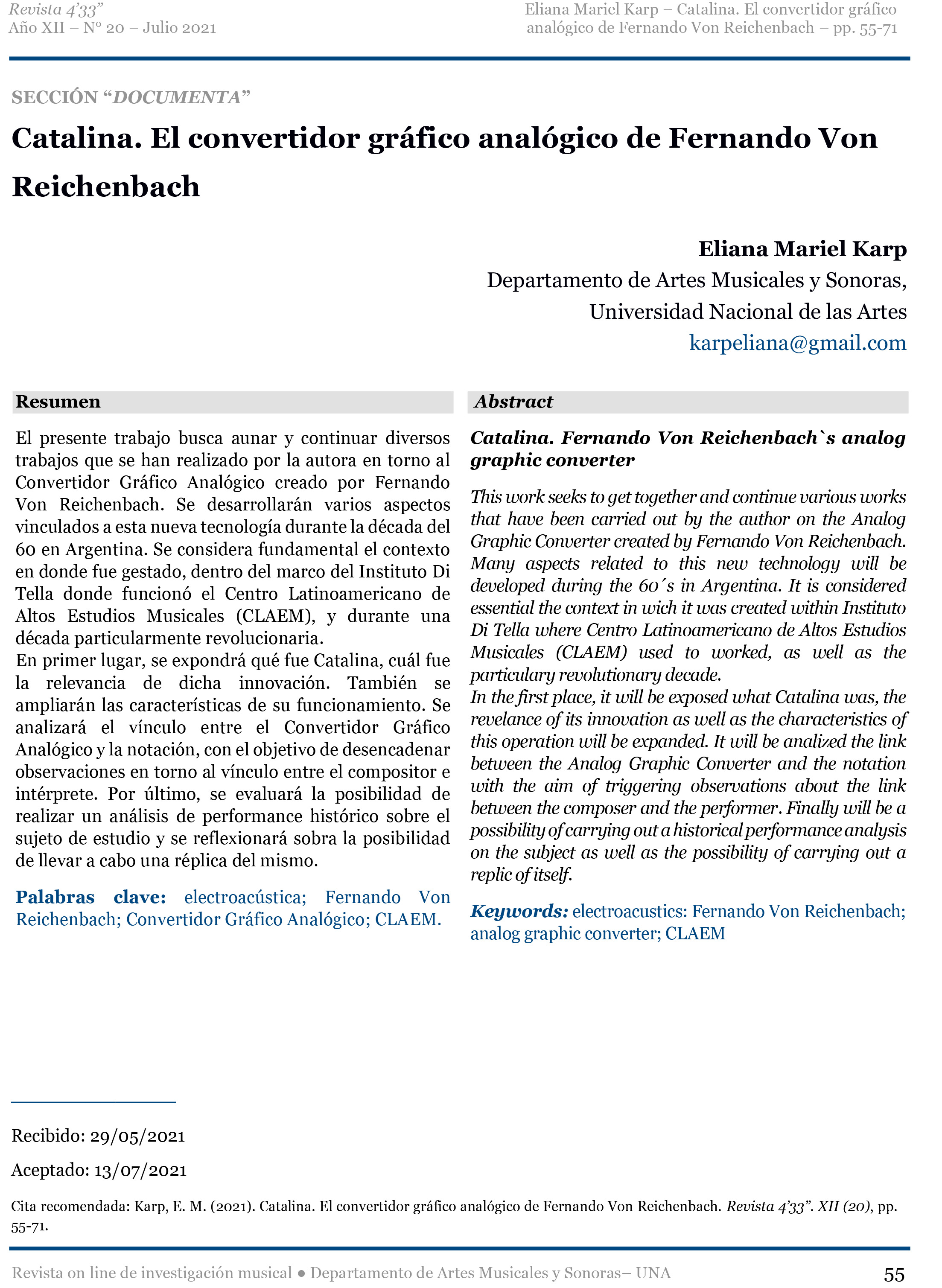Catalina. El convertidor gráfico analógico de Fernando Von Reichenbach
Palabras clave:
electroacústica, Fernando Von Reichenbach, Convertidor Gráfico Analógico, CLAEM, electroacoustics, analog graphic converterResumen
El presente trabajo busca aunar y continuar diversos trabajos que se han realizado por la autora en torno al Convertidor Gráfico Analógico creado por Fernando Von Reichenbach. Se desarrollarán varios aspectos vinculados a esta nueva tecnología durante la década del 60 en Argentina. Se considera fundamental el contexto en donde fue gestado, dentro del marco del Instituto Di Tella donde funcionó el Centro Latinoamericano de Altos Estudios Musicales (CLAEM), y durante una década particularmente revolucionaria.
En primer lugar, se expondrá qué fue Catalina, cuál fue la relevancia de dicha innovación. También se ampliarán las características de su funcionamiento. Se analizará el vínculo entre el Convertidor Gráfico Analógico y la notación, con el objetivo de desencadenar observaciones en torno al vínculo entre el compositor e intérprete. Por último, se evaluará la posibilidad de realizar un análisis de performance histórico sobre el sujeto de estudio y se reflexionará sobra la posibilidad de llevar a cabo una réplica del mismo.
ABSTRACT
Catalina. Fernando Von Reichenbach`s analog graphic converter
This work seeks to get together and continue various works that have been carried out by the author on the Analog Graphic Converter created by Fernando Von Reichenbach. Many aspects related to this new technology will be developed during the 60´s in Argentina. It is considered essential the context in wich it was created within Instituto Di Tella where Centro Latinoamericano de Altos Estudios Musicales (CLAEM) used to worked, as well as the particulary revolutionary decade.
In the first place, it will be exposed what Catalina was, the revelance of its innovation as well as the characteristics of this operation will be expanded. It will be analized the link between the Analog Graphic Converter and the notation with the aim of triggering observations about the link between the composer and the performer. Finally will be a possibility of carrying out a historical performance analysis on the subject as well as the possibility of carrying out a replic of itself.


